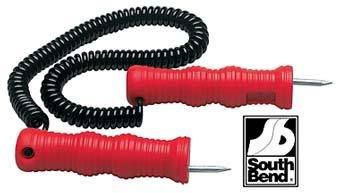Posted by: bilojax
Ice water self-extraction - 01/24/09 11:44 PM
Anybody have some good ideas for extracting yourself from water onto an ice shelf along shore?
I'm an avid year-round canoer/kayaker and some like-minded friends who live up north have recently decided that they need to start carrying two home-made "ice picks", each consisting of a stout nail or two fixed into a 2-3 foot board. The theory is that if they capsize on a river where both banks are lined with ice shelves, they can use the boards to pull themselves out of the river onto the ice.
I don't have any experience with ice extraction, but I wonder if that's not overkill. The winter paddler's survival kit is already pretty bulky as it is, so I don't see adding to it unnecessarily. Also, I'm afraid many people would tend to forget to find and untie the ice picks before swimming to shore in the confusion of a capsize in icy water.
We all generally carry some type of rescue knife attached to our PFDs anyway - would a knife in hand give you enough purchase to pull yourself out of the ice soon after you went in? How about 2 knives, one in each hand? Is there any other compact gear that could be routinely carried in a PFD pocket to help pull yourself out of the water onto an ice shelf?
I'm an avid year-round canoer/kayaker and some like-minded friends who live up north have recently decided that they need to start carrying two home-made "ice picks", each consisting of a stout nail or two fixed into a 2-3 foot board. The theory is that if they capsize on a river where both banks are lined with ice shelves, they can use the boards to pull themselves out of the river onto the ice.
I don't have any experience with ice extraction, but I wonder if that's not overkill. The winter paddler's survival kit is already pretty bulky as it is, so I don't see adding to it unnecessarily. Also, I'm afraid many people would tend to forget to find and untie the ice picks before swimming to shore in the confusion of a capsize in icy water.
We all generally carry some type of rescue knife attached to our PFDs anyway - would a knife in hand give you enough purchase to pull yourself out of the ice soon after you went in? How about 2 knives, one in each hand? Is there any other compact gear that could be routinely carried in a PFD pocket to help pull yourself out of the water onto an ice shelf?

